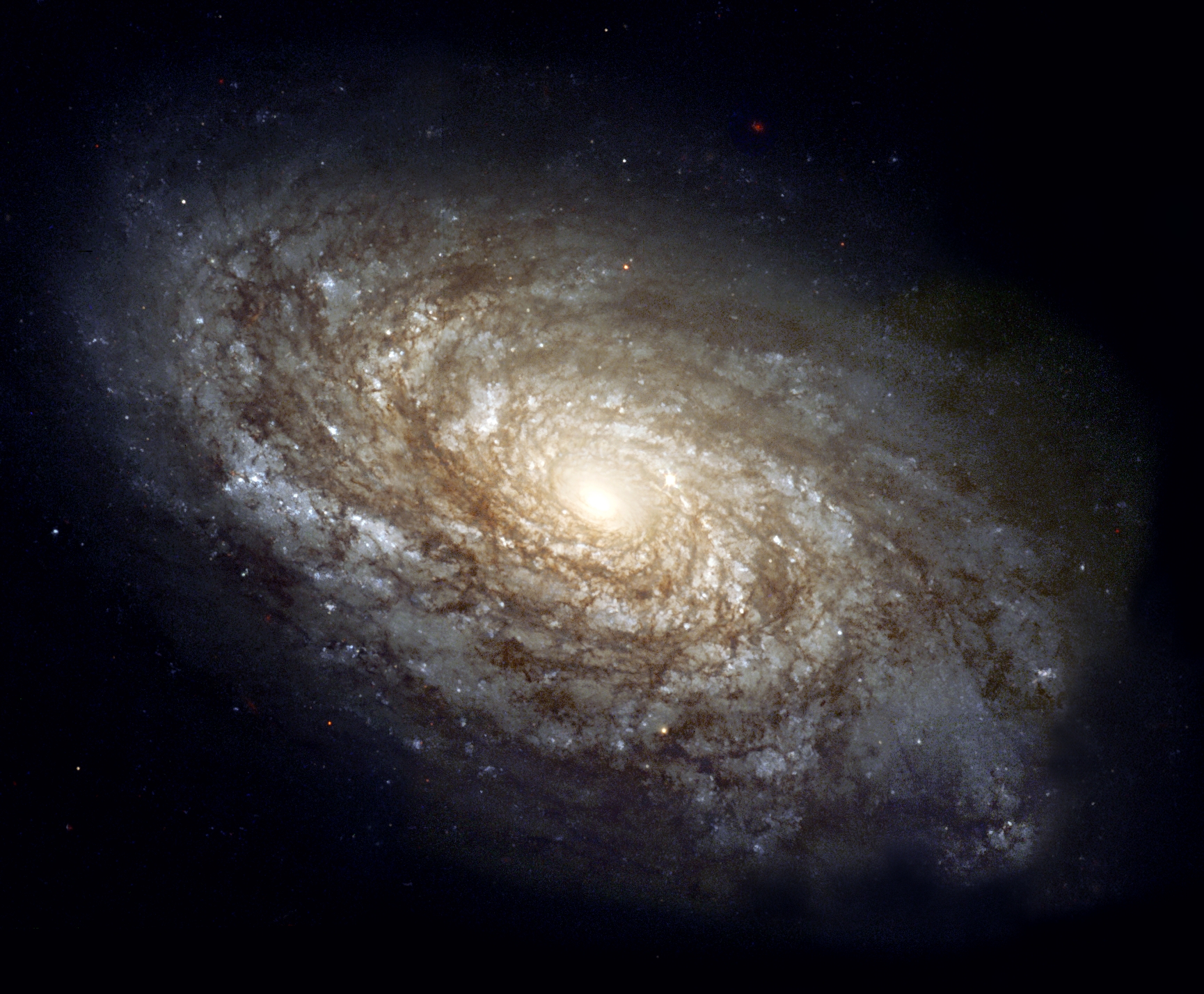The Milky Way is a barred spiral galaxy that contains our Solar System, making it the cosmic home of Earth. When observed from Earth, it appears as a hazy band of light stretching across the night sky, an effect created by countless stars that are too distant to be resolved individually by the naked eye.
Galactic Structure and Composition
The Milky Way is estimated to contain 100 to 400 billion stars and over 100 billion planets. Its structure consists of a central bar-shaped core, surrounded by spiral arms that extend outward. The galaxy spans approximately 100,000 light-years in diameter and has an estimated mass of 1.5 trillion times that of the Sun.
At its center lies Sagittarius A*, a supermassive black hole with a mass of approximately 4.3 million solar masses. This central black hole plays a crucial role in the galaxy’s gravitational dynamics, influencing the movement of surrounding stars and interstellar material.
The Milky Way is surrounded by a halo of dark matter, which extends far beyond its visible structure and is believed to account for a significant portion of the galaxy’s total mass. This invisible component influences the motion of stars and helps hold the galaxy together.
The Milky Way’s Place in the Universe
The Milky Way is part of a galaxy group known as the Local Group, which includes more than 80 galaxies, the largest of which are the Milky Way, the Andromeda Galaxy (M31), and the Triangulum Galaxy (M33). It also hosts numerous satellite galaxies, with at least 61 confirmed companions within 1.4 million light-years. Notable examples include the Large and Small Magellanic Clouds, which are among the most prominent satellite galaxies.
Future Evolution: Collision with Andromeda
In approximately 4.5 billion years, the Milky Way is predicted to undergo a major cosmic event—a collision with the neighboring Andromeda Galaxy. This event, known as the Andromeda–Milky Way collision, is expected to reshape both galaxies, eventually merging into a single, larger elliptical galaxy over millions of years. Despite the massive scale of this collision, the vast distances between individual stars mean that direct stellar collisions will be rare.
Scientific Significance and Exploration
The study of the Milky Way falls under the field of galactic astronomy, which seeks to understand its structure, evolution, and role in the broader cosmos. Modern telescopes, including the Gaia spacecraft and the Hubble Space Telescope, continue to provide insights into the galaxy’s motion, composition, and hidden dark matter components.
As a dynamic and ever-evolving structure, the Milky Way remains a subject of extensive research, offering valuable insights into stellar formation, cosmic evolution, and the fundamental nature of galaxies. Understanding its past, present, and future helps astronomers gain a broader perspective on the universe’s origins and ultimate fate.
Tags: Distance and size of the Milky Way Galaxy, Effects of interstellar dust on observations of the Milky Way, Formation of stars and planetary systems in the Milky Way, Galactic evolution and future of the Milky Way, How astronomers study the Milky Way using telescopes, How does the Milky Way compare to other galaxies?, How does the Milky Way fit into the Local Group of galaxies?, How many stars are there in the Milky Way?, Satellite galaxies of the Milky Way and their significance, Scientific discoveries about the Milky Way Galaxy, Structure and composition of the Milky Way Galaxy, Supermassive black hole at the center of the Milky Way, The role of dark matter in the Milky Way's formation, Upcoming collision between the Milky Way and Andromeda Galaxy, What is the Milky Way Galaxy and how was it formed?